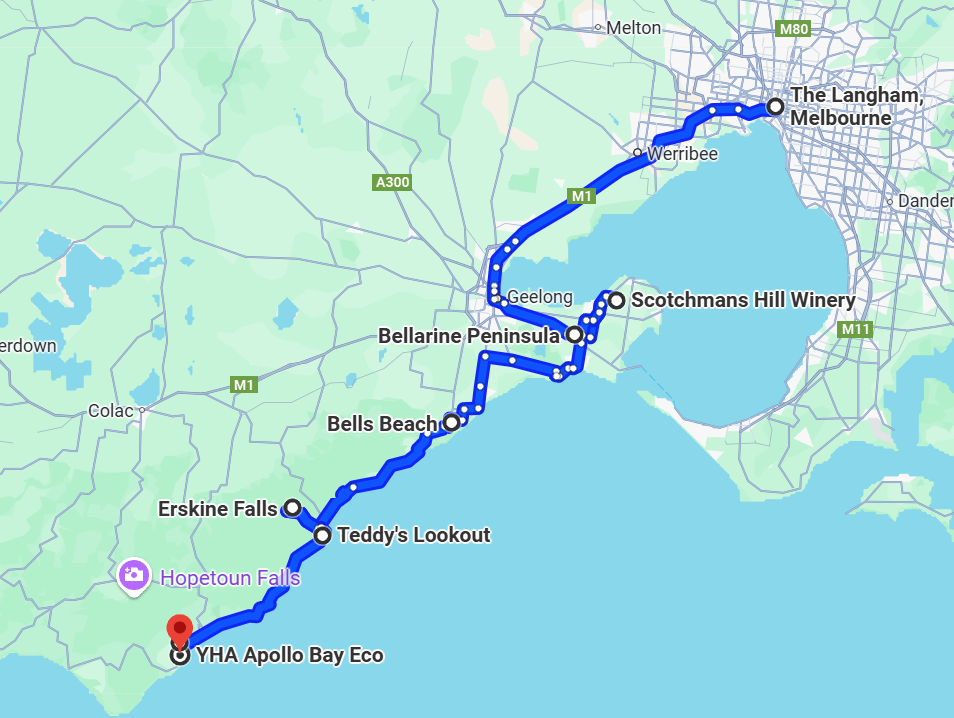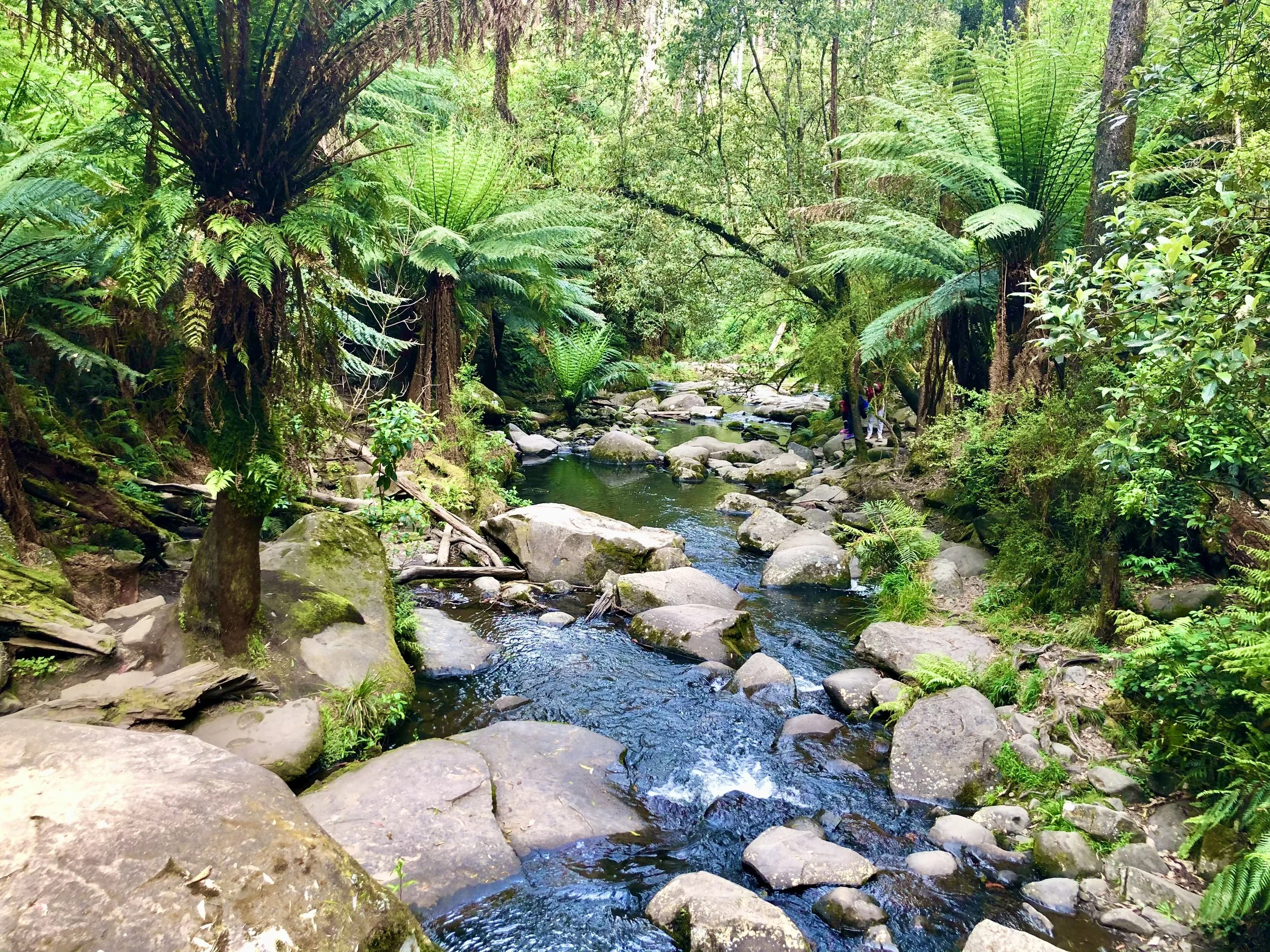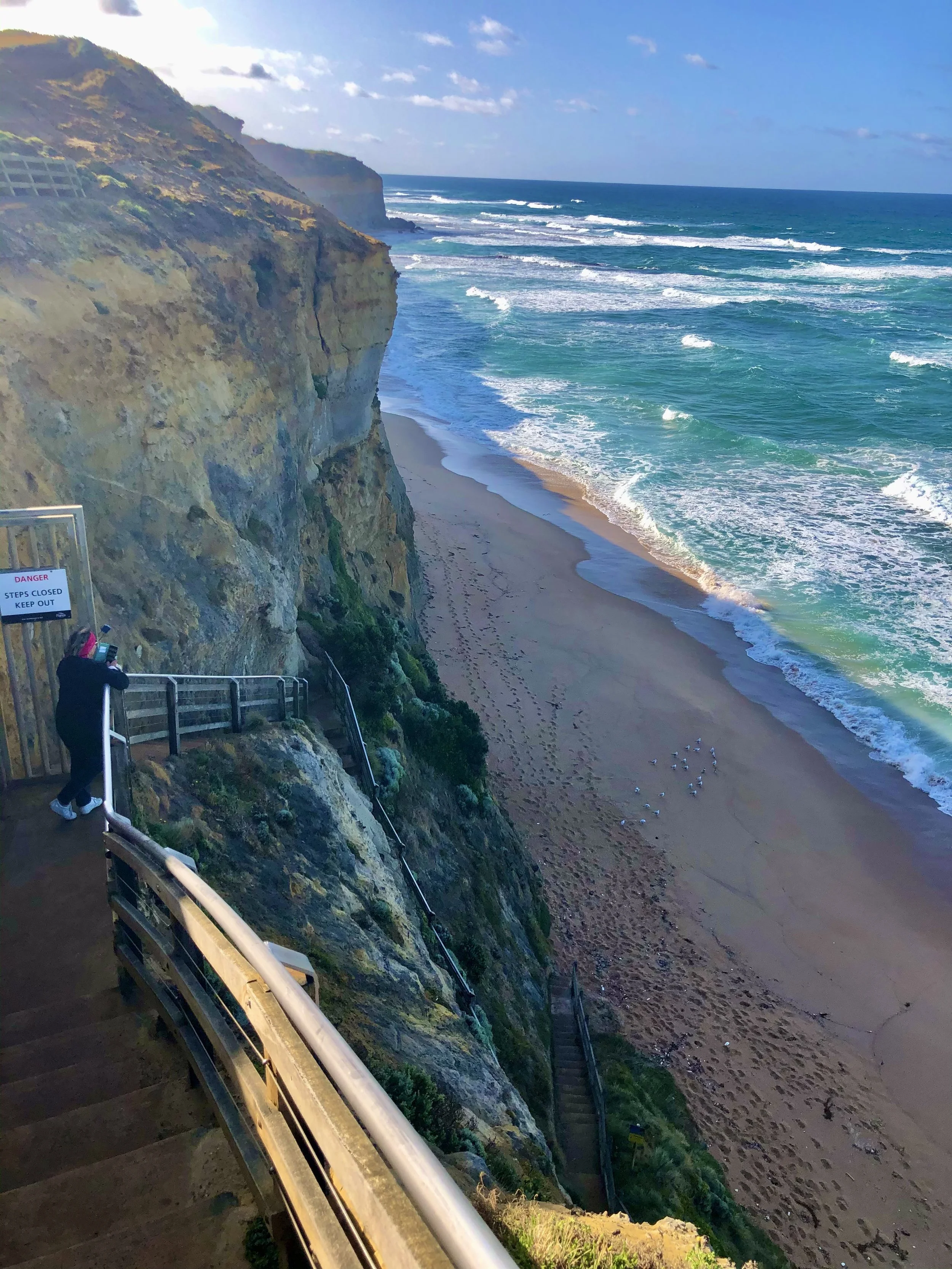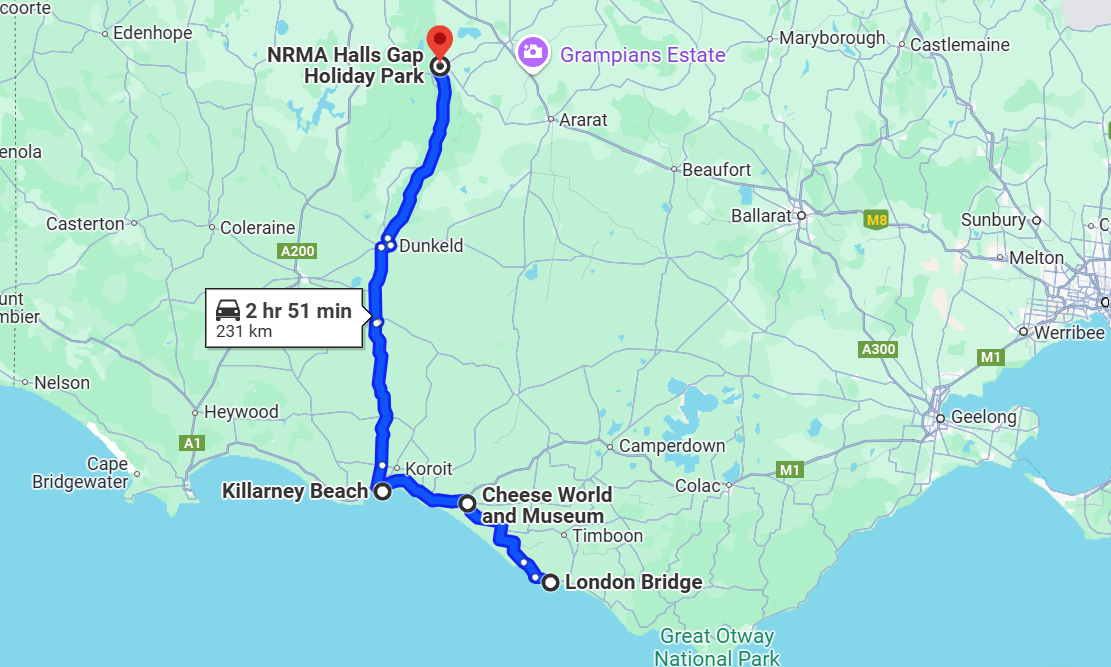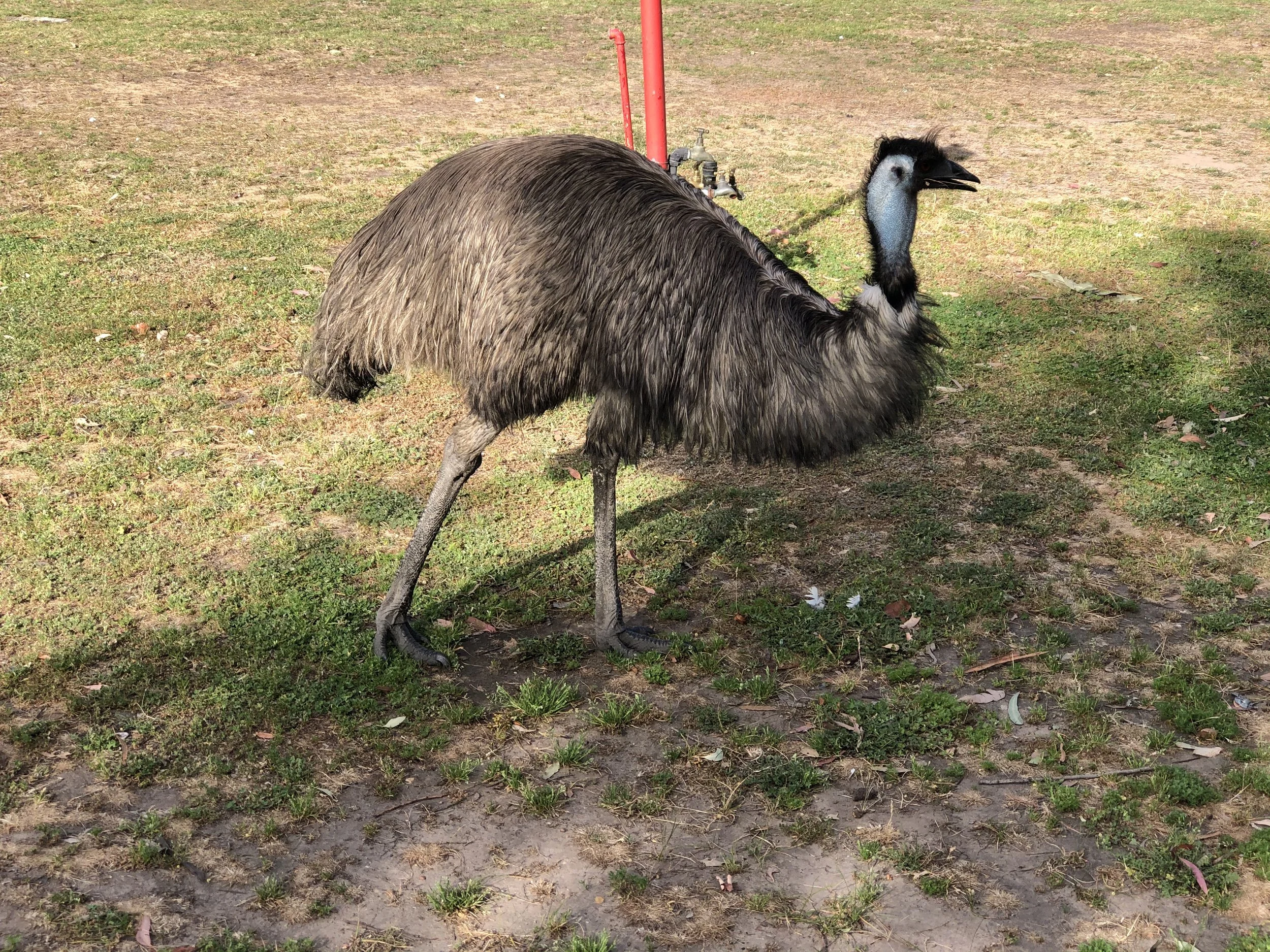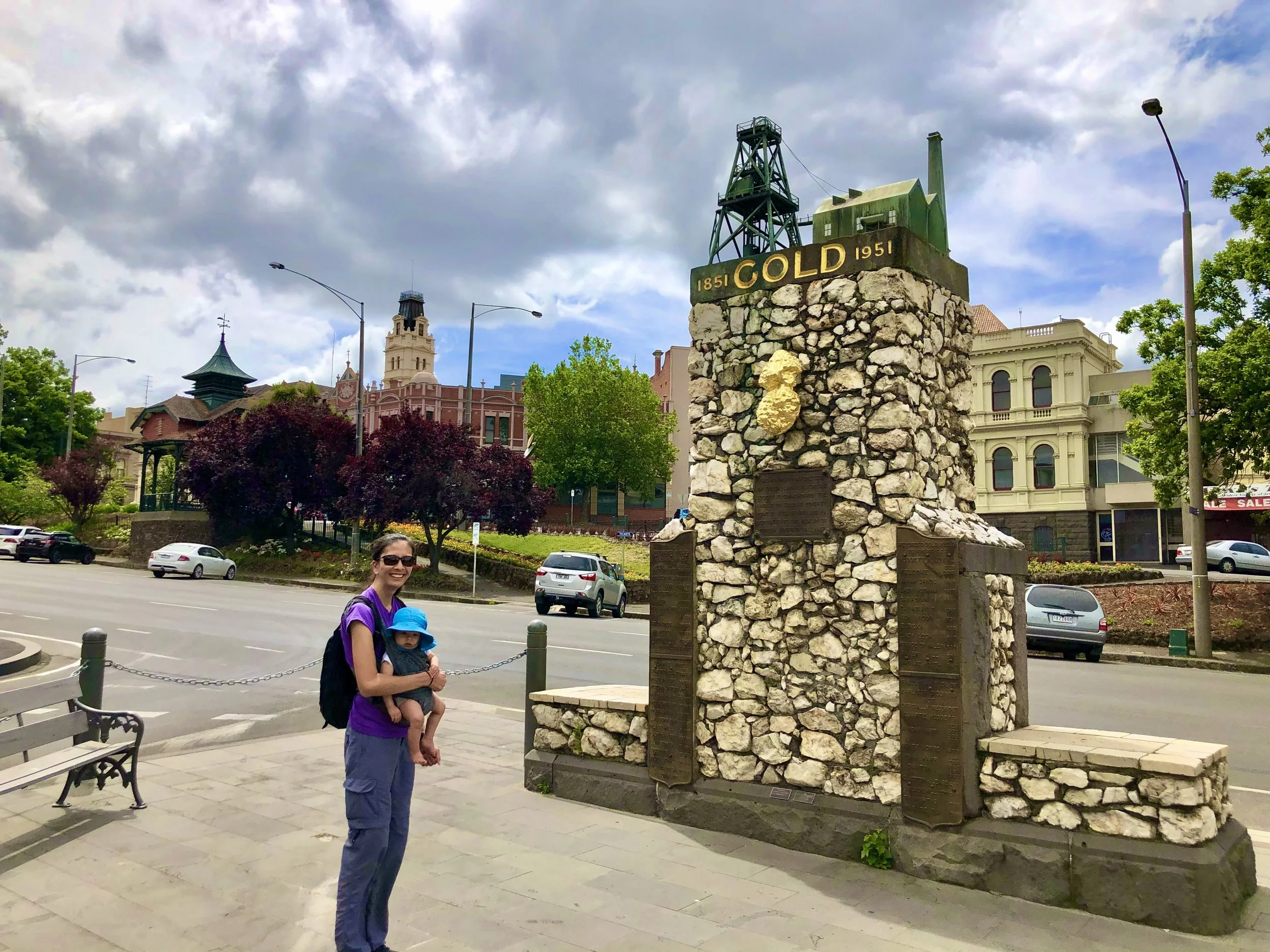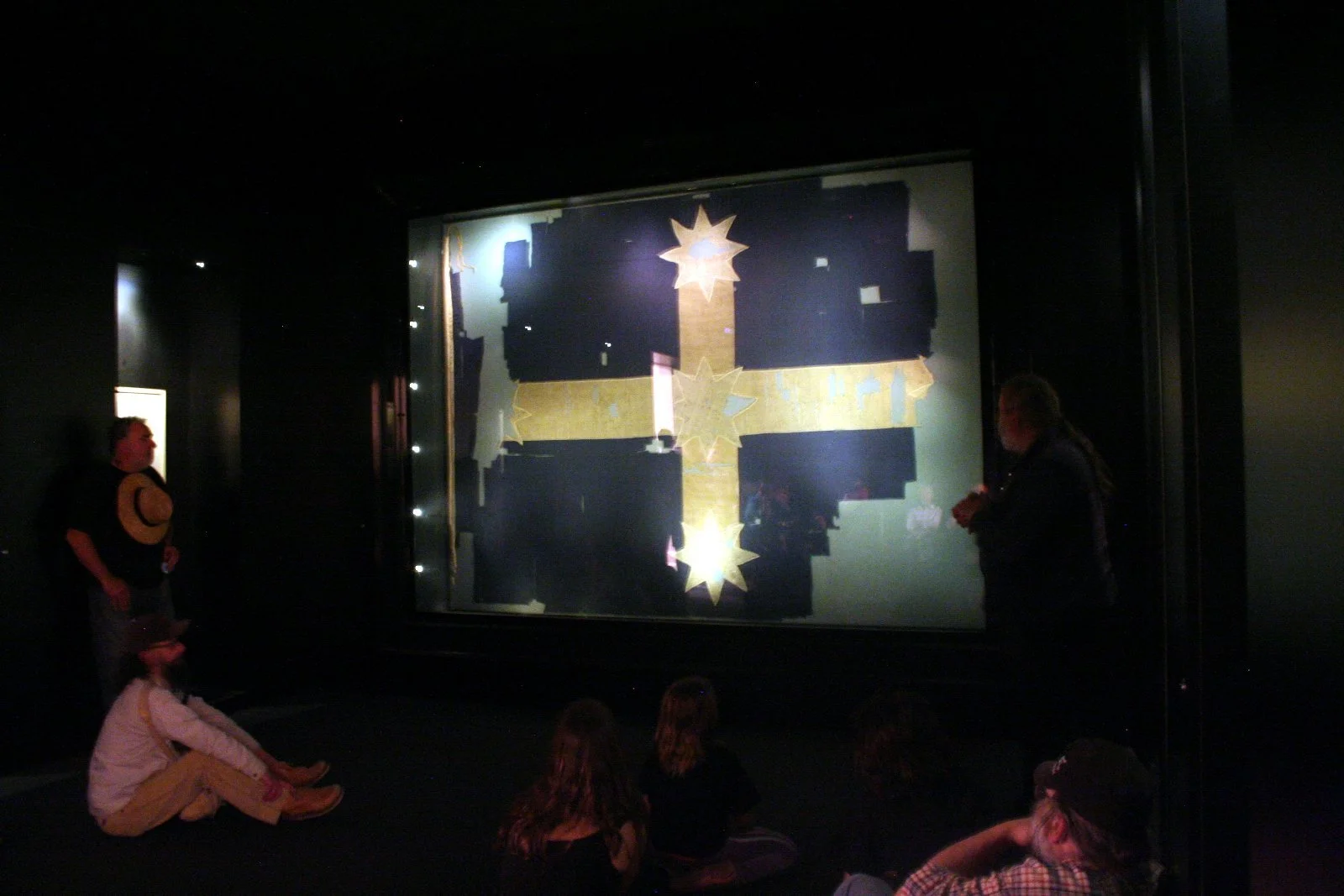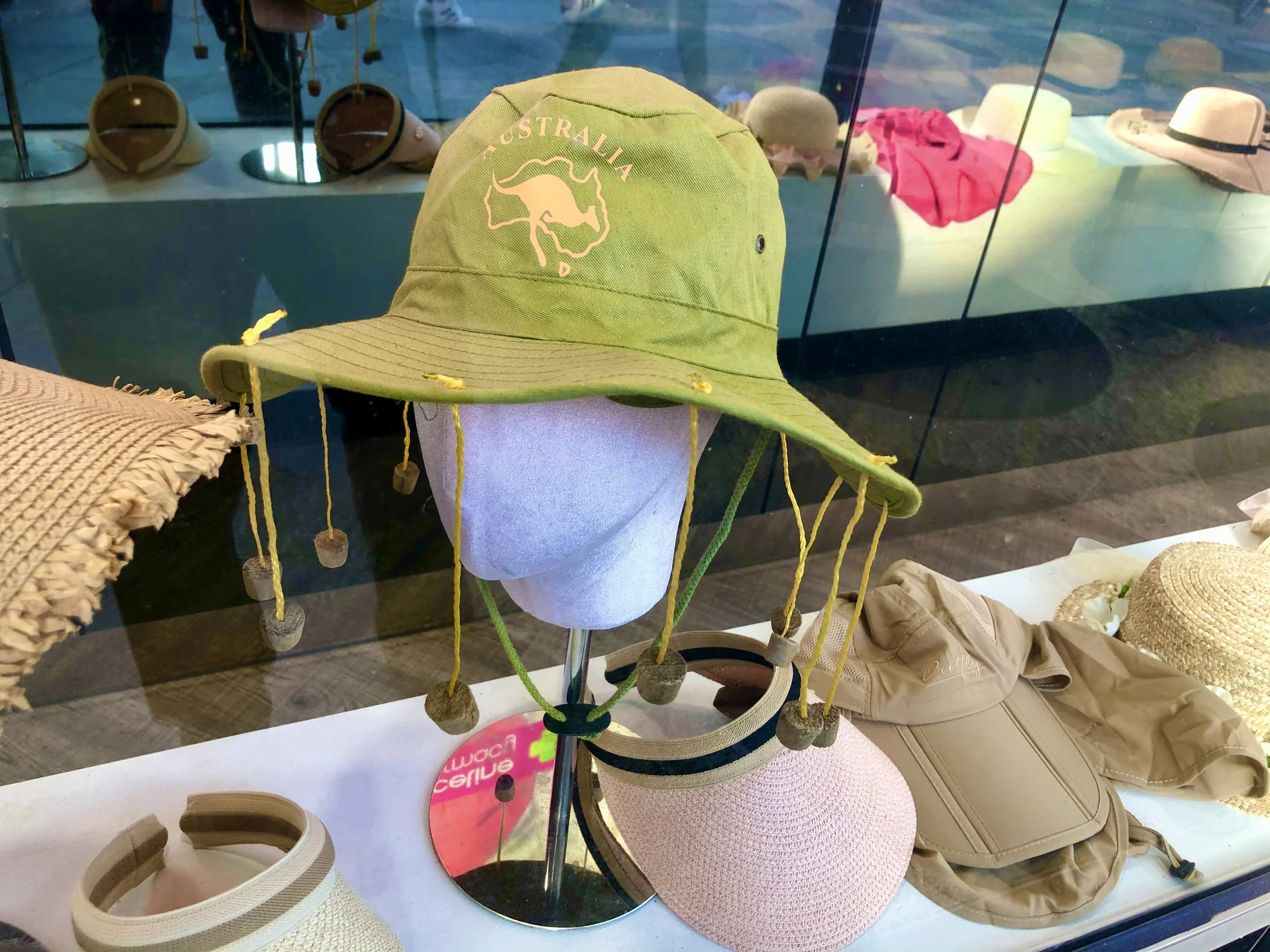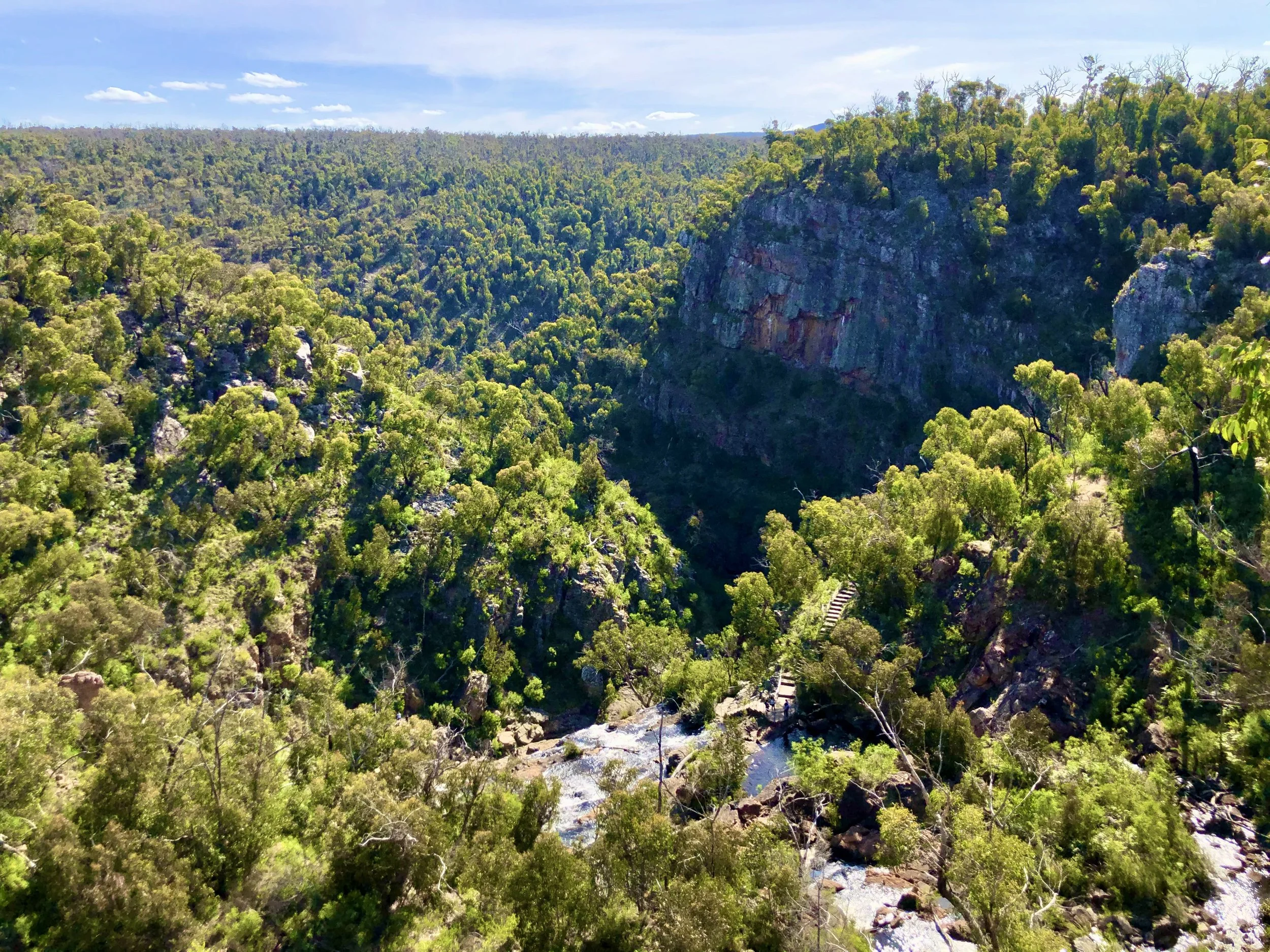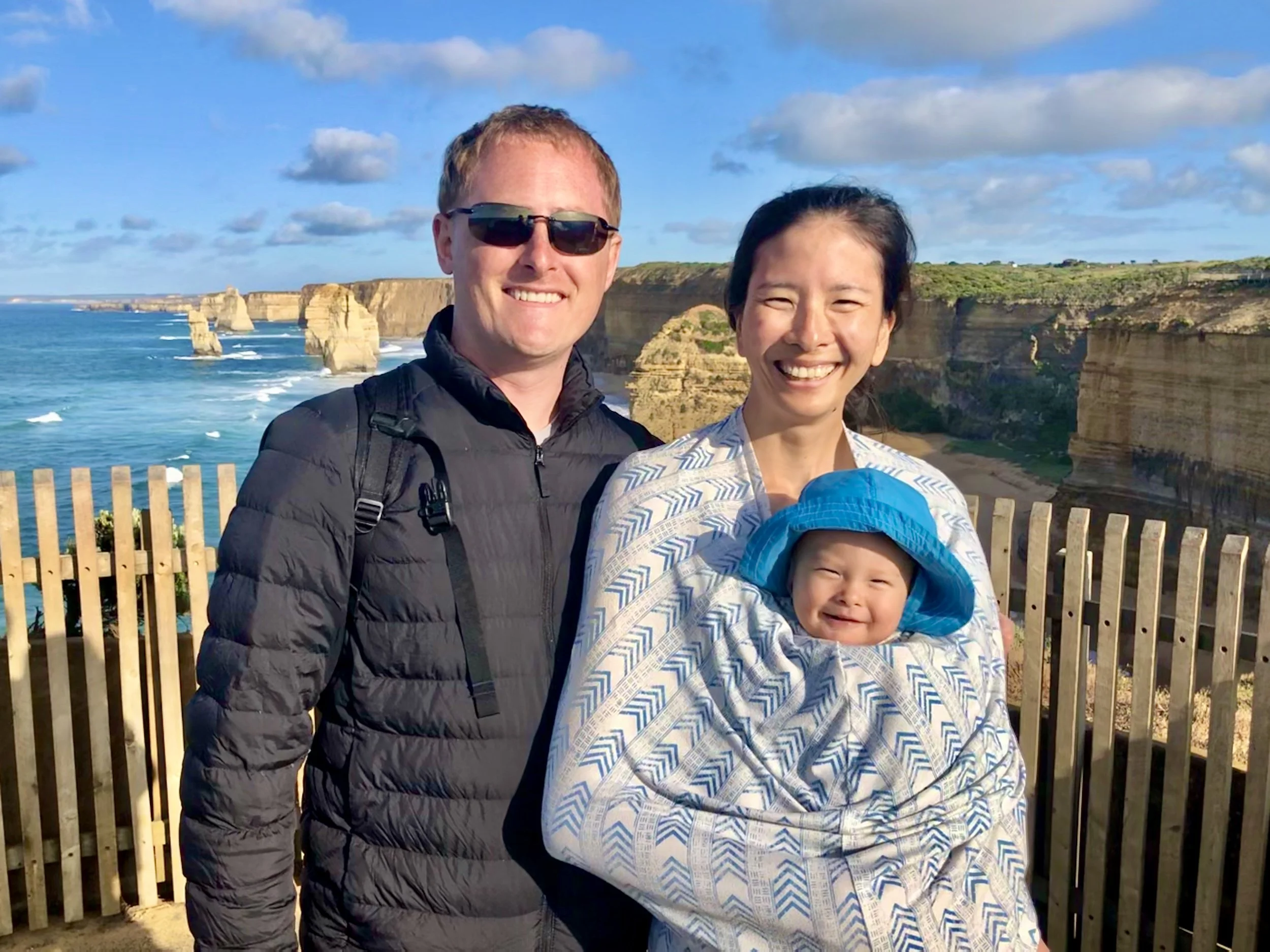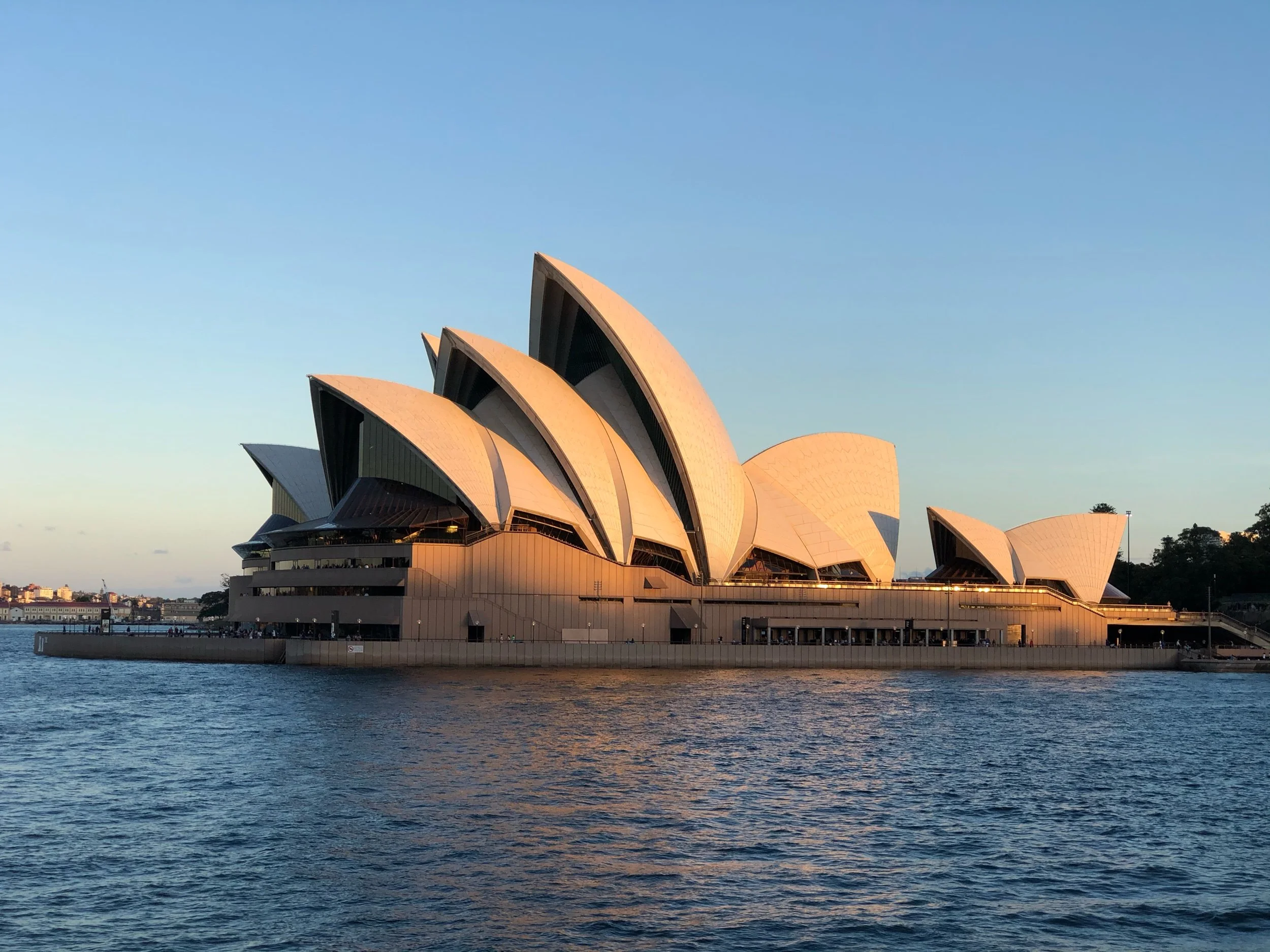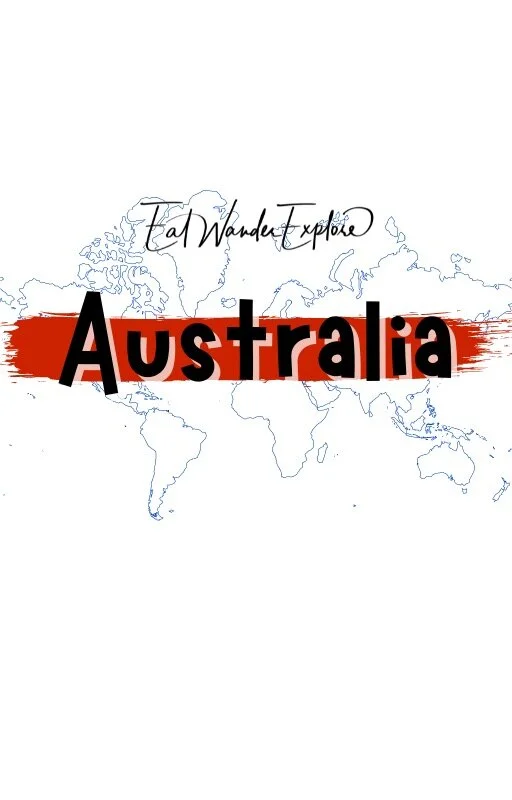The Ultimate Great Ocean Road Australia Itinerary: From Bellarine Wineries to Great Otway National Park Waterfalls
Please note: This article may contain affiliate links. See our disclosure to learn more.
Destinations > Oceania > Australia > The Ultimate Great Ocean Road Australia Itinerary: From Bellarine Wineries to Great Otway National Park Waterfalls
An Unforgettable Family Adventure: Sydney to Melbourne via the Great Ocean Road Itinerary
This Great Ocean Road Australia itinerary takes you on an unforgettable journey from Sydney to Melbourne and beyond, covering both coastal highlights and inland treasures. Whether you’re looking to explore the Great Otway National Park waterfalls, taste wines at Bellarine wineries, or experience Australia’s rich cultural history in Ballarat, this road trip has it all. We’ll guide you through must-see stops like Teddy's Lookout and the iconic Twelve Apostles, as well as giving you some great recommendations for accommodations like the amazing Lakes Entrance caravan parks. Prepare for a road trip that combines natural wonders, cultural experiences, and adventure. This is how we embrace the remote work lifestyle and travel the world endlessly.
Planning to explore Sydney first? Check out our Sydney article!
Table of Contents:
Important Driving Tips for Australia
The Coastal Route: Sydney to Melbourne
Orbost and Lakes Entrance: Coastal Relaxation
Hidden Gem in Warragul: 3 Brothers and an Oven
Bellarine Wineries: Wine Tasting with a View
The Great Ocean Road: Bells Beach, Teddy’s Lookout, and More Coastal Gems
Erskine Falls Trek and Lorne Waterfalls: Nature’s Best Along the Great Ocean Road
Apollo Bay and Great Otway National Park Waterfalls: Into the Wilderness
The Twelve Apostles, Loch Ard Gorge, and Gibson Steps: Iconic Coastal Views
Bay of Islands, Allansford Cheese World, and Killarney Beach: Coastal Treasures
Grampians National Park: Natural Wonders and Wildlife
Sovereign Hill: Ballarat’s Gold Rush History
Ballarat Highlights and the Eureka Centre: A Relaxing End to Our Journey
Best Time of Year to Embark on This Road Trip
Alternative Routes and Customizable Stops
Tips for Parents Traveling with Infants
Jenny and Waltoshi smile at me from the car window at one of our stops along the Great Ocean Road.
1. Important Driving Tips for Australia
Two Important things to know about driving around Australia:
They don’t tolerate speeding - Driving 5 kph over the speed limit is not tolerated. There are camera traps all around the country that will capture you and send the ticket to your rental company, who will report your information. You WILL receive dozens of speeding tickets for A$280 each! We were warned not to go above the limit, so we did our best - but occasionally the limit will change from 100 KPH to 60 KPH and you ARE EXPECTED to decrease all the way to 60 KPH by the time you reach the sign. We did end up with 1 ticket for A$280 in this type of situation. BEWARE!
You don’t need to rent an RV to drive around Australia! While you can find a great RV rental in Sydney Australia they are not very cheap anymore, especially because they are popular now - but even gas prices are quite high, and RVs eat up a large amount of gasoline! Many people will just rent a car with a fold-down back seat and use air mattresses and sleeping bags or blankets. IMPORTANT FACT: Many towns have public bathroom facilities AND PRIVATE FREE SHOWERS! Park near one of these areas after dark (pay attention to the parking signs) and you’ll have your restroom, showers, and car-bed. It’s pretty much like camping but a lot cheaper! Plus, there are tons of free camping sites as well.
Also, keep in mind that Australia is BIG and that it will take quite a long time to do these drives. Things may be farther apart than you might think, so give yourselves plenty of time to travel.
Those warnings aside, Australia’s road trips are renowned for their diversity, and the Sydney to Melbourne drive via the coast with the Great Ocean Road is a major standout. This road trip will bring you along the coastal route from Sydney to Melbourne. It then continues along The Great Southern Touring Route, which includes the Great Ocean Road. Plan each road day carefully to balance driving with sightseeing and rest stops.
Google Maps path from Sydney, Australia, to the Kiama Blowhole passing Royal National Park and stopping at Mount Keira Lookout.
2. The Coastal Route: Sydney to Melbourne
When we started our road trip itinerary from Sydney to Melbourne, we knew we wanted to take it slow and enjoy the scenic route. It was an incredible journey, and Waltoshi loved looking around at all of the new spots as the scenery changed. Although we recommend some great spots to see at the Royal National Park, like the Wedding Cake Rock Walk, in our Sydney article, we’ll skip that stop here as we head straight into the road trip along the coast.
Pathway at the Mt Keira Lookout with breathtaking views of Wollongong and the ocean from above.
Mt Keira Lookout
Our first stop was the Mt Keira Lookout near Wollongong. It's the perfect place to stretch your legs after leaving Sydney and sponsored by the Rotary Club International. The views are absolutely stunning! We walked around a bit and had a quick snack with Waltoshi, soaking in the views of the city below and the vast expanse of the ocean. There’s also a bushwalking trail here, which we wandered down a bit before returning to the lookout since we had a long drive ahead. There’s a snack and coffee cart here as well as a restroom.
We stand along the railing closest to front of the Kiama Blowhole while Waltoshi notices the water.
Kiama Blowhole
Next, we stopped at the Kiama Blowhole, and boy, did it put on a show! It’s the largest blowhole in the world, and when the waves hit just right, water shoots up over 25 meters in the air. We all got a little sprinkling by standing too close, but it was worth it to see Waltoshi’s surprised face! There’s a picnic area near the Kiama Lighthouse, so we had a quick bite and let our son crawl around on the grassy hill - where there were quite a few grey parakeet-looking Galah cockatoos with red underbellies flying around - before continuing south. If you’re up for more, the Little Blowhole isn’t too far away, and it’s smaller but more consistent. There’s also a decent number of restaurants, cafes, and shops in the town. You’ll find a large public restroom area here as well.
Accommodations near Kiama Blowhole:
The Sebel Kiama Harbourside – A family-friendly option close to the blowhole and beaches.
A crowd of kangaroos at Murramarang Aboriginal Area and National Park in Bawley Point.
Murramarang Aboriginal Area - Bawley Point
Finally, some legit wild kangaroos! This stop in Bawley Point was particularly special, although with so many kangaroos we felt a little bit cautious. The Murramarang Aboriginal Area, part of Murramarang National Park, is home to one of the largest Aboriginal midden sites, and we spent some time walking the 2.2-kilometer loop trail that guides you through thousands of years of history. It felt important for us to share this part of Australia’s history with Waltoshi, reading the signs to him that were posted throughout the walk, even though he was too young to understand it. The beaches here are also stunning, and we took a short walk along the sand before heading back to the car. But, wow, so many kangaroos when you get up into the back of the loop trail! Certainly memorable.
NRMA Murramarang Beachfront Holiday Resort
By the time we arrived at the Murramarang Beachfront Holiday Resort, it was fully booked. We had hoped to stay overnight to explore more of the coast, but we had to press on to find accommodation further along. To avoid our predicament, I recommend booking early if you have the chance. The resort is family-oriented, situated close to the Murramarang Aboriginal Area, and offers beachfront cabins, villas, and camping sites. It's ideal for families, featuring a heated pool, splash park, playground, and direct beach access, plus it's common to see wildlife like kangaroos roaming around the park.
The car sized puddle on Dry River at the end of the path in Quaama's rest area.
Starry Night Skys in Quaama
As darkness fell, we found few opportunities to stop, and accommodation options were no longer available. Eventually, exhaustion set in, and we stopped at the only available spot we could find, a rest area in Quaama. Plus, we narrowly avoided an unintended detour into the Dry River. It was so dark, we weren’t sure exactly where to park, but Bradley felt that we shouldn’t keep taking the dark little path we were on and instead decided to park near the restrooms and the road. That saved us from disaster for sure as we saw what we would have ended up driving into the next morning, a puddle the size and shape of a car on the edge of the Dry River!
However, safely near the restrooms, we set Waltoshi up in his KidCo Peapod inside the car, and we laid back to close our eyes when we noticed the sky above—an endless blanket of stars, more brilliant than we’d ever imagined possible. It wasn’t just a clear night; it was as if the entire universe had opened up before us, revealing countless constellations and celestial wonders, stretching infinitely in every direction. We stood outside the car in awe, freezing in the night in the middle of nowhere in Australia, utterly captivated by the vastness above. We gazed upward as if living in real-world planetarium, speechless, looking at the sheer majesty of that night sky, a sight that will stay with us forever. If you’re reading this, please buy us this dedicated astrophotography camera so that we never miss this again nudge nudge. Simply unbelievable!
Google Maps path from Kiama Blowhole to Ninety Mile Beach stopping at Murramarang Aboriginal Area, Quaama, and Lakes Entrance.
3. Orbost and Lakes Entrance: Coastal Relaxation
Waltoshi plays in a sand hole while Bradley sits nearby with the ocean in the background at Lakes Entrance Beach.
Orbost and Lakes Entrance Beach
After crossing into Victoria the next morning, we made our way through the charming town of Orbost, nestled along the Snowy River. This peaceful stop was a perfect break from the road and gave us a chance to explore some of Australia’s rich, untouched landscapes while grabbing a coffee and some pastries for breakfast. Orbost is also the gateway to Cape Conran Coastal Park, a beautiful stretch of beaches and forests. While we didn’t have time to venture there on this trip, we’ve marked it on our list for the next time we’re exploring East Gippsland. If you’re into hiking, fishing, or just relaxing by unspoiled beaches, this area is a gem.
We decided to take a break at Lakes Entrance, our main stop for the day. This is one of those places where you can truly relax, although a bit windy for us that day, but still very relaxing walking along the pathway and seeing so many black swans swimming around. Waltoshi had a ton of fun at Lakes Entrance Beach and watching him play in the sand made us realize how important these slow moments are during a road trip.
The view from Jemmy's Point Lookout in Lakes Entrance, overlooking the waterways, Rigby Island, McAuliffs Island, and in the distance even Flannagans Island.
Jemmy’s Point Lookout
Not far away, we found a caravan park near Ninety Mile Beach, which gave us easy access to both the ocean and the network of inland waterways that make this town so unique. We recommend taking a boat tour along the waterways, which is a fantastic way to see the area. Alternatively, there’s a great Rotary Club lookout of Rigby Island, McAuliffs Island, Flannagans Island, and the channels called Jemmy’s Point Lookout as well. We also recommend the seafood in this area - it’s delicious! So, we treated ourselves to some fresh fish and chips and ice cream before heading out.
During our journey, we spent two nights at rest areas in our car due to a lack of suitable accommodations. One such night was in Quaama. However, the abundance of Lakes Entrance caravan parks makes it unnecessary to sleep in your vehicle. For those seeking a comfortable spot to rest and recharge, this is an ideal stop before diving into the next part of your Great Ocean Road Australia itinerary. And if you're without a caravan, like we were, we recommend checking out the NRMA Eastern Beach.
lakes entrance caravan parks:
NRMA Eastern Beach Holiday Park
Situated close to Ninety Mile Beach, this caravan park features modern amenities like a swimming pool, playgrounds, and easy access to the beach, making it a family-friendly option.
This caravan park, located along the banks of Cunninghame Arm, offers direct access to the water, ideal for fishing and boating. It has various accommodation options, from powered caravan sites to family cabins.
A smaller, quieter caravan park, perfect for a relaxing stay. It's just a short walk from the beach and offers cabins, powered sites, and amenities like a pool and BBQ area.
This is a family-friendly caravan park with both cabin and caravan site options. It features resort-style facilities, including swimming pools, BBQ areas, a children's playground, and a pedal go-kart hire. Located just a short walk from the main shopping center and Ninety Mile Beach, it’s a great choice for families looking for a mix of relaxation and fun.
The Lakes Beachfront Holiday Park
This caravan park offers beachfront camping and caravan sites with a range of accommodation options, from powered sites to cabins. It’s right on the coast, providing stunning ocean views and direct beach access, making it ideal for beach lovers.
This caravan park offers both cabins and powered/unpowered sites, providing a budget-friendly option near the town center. It’s a simple, peaceful park for travelers wanting close access to Lakes Entrance’s attractions.
This family-friendly caravan park offers a variety of cabin types, powered sites, and great amenities including a playground and BBQ facilities. It’s close to the beach and perfect for families looking to explore the Lakes Entrance area.
While not a traditional caravan park, Metung Holiday Villas offers villa-style accommodation close to the Gippsland Lakes. It’s a relaxing spot for families or couples looking for a serene getaway, featuring a swimming pool and nearby walking trails.
This road trip has been everything we hoped for and more, and we’re only getting started! Next up, we’ll be heading toward the Great Southern Touring Route, where the Great Ocean Road promises even more breathtaking views and unforgettable experiences.
Google Maps route from Lakes Entrance to Melbourne with a stop at 3 Brothers and an Oven in Warragul
4. Hidden Gem in Warragul: 3 Brothers and an Oven
Pizza from 3 Brothers and an Oven in Warragul.
After leaving Lakes Entrance, we made a special stop at 3 Brothers and an Oven, a local spot known for its wood-fired pizzas that someone had recommended to us along our journey. Waltoshi was eager to get out of his car seat, so we took a quick break to grab a bite, and it did not disappoint! If you’re passing through, we’d recommend stopping in!
This is where you’ll end up arriving into Melbourne, and where we recommend stopping for a few days to really take in everything that Melbourne is known for, including the penguins and the amazing markets, but we cover all of that in our Melbourne article, so we won’t cover it here.
Our Recommended Accommodation in Melbourne:
The Langham Melbourne – A luxury option with great views of the Yarra River, perfect for unwinding and pampering yourself after the first part of this trip, or even before or after your Great Ocean Road trip!
Next up we begin our amazing Great Ocean Road Australia itinerary, taking you from Melbourne to the Twelve Apostles and beyond, sharing hot spots and secret spots like about Bells Beach AU, Halls Gap caravan park, and some interesting Ballarat Accommodation options. You’ll even learn the difference between a cappuccino vs flat white! Enjoy your journey.
How Many Days Do You Need for the Great Ocean Road?
If you're doing a relaxed trip, we recommend spending 3 to 4 days exploring the Great Ocean Road. This gives you enough time to enjoy key stops like the Twelve Apostles, Teddy’s Lookout, and the Great Otway National Park waterfalls without feeling rushed. For a more leisurely pace, 5 or 6 days would allow time for extended hikes and more winery visits along the way. The full trip that we took from Sydney and back will take at least a week or two.
Google Maps route from The Langham, Melbourne to YHA Apollo Bay Eco with stops at Scotchmans Hill Winery, Bells Beach, Teddy's Lookout, and Erskine Falls.
5. Bellarine Wineries: Wine Tasting with a View
Scotchmans Hill vineyards on the Bellarine Peninsula near Melbourne.
As we headed toward the Great Ocean Road, we couldn’t resist a quick detour to the Bellarine Peninsula for some wine tasting. We occasionally find ourselves claiming that we support local vineyards, and the Bellarine wineries are known for producing some of Australia’s best cool-climate wines.
We stopped at Scotchmans Hill, one of the top wineries in the region, although with our long drive for the day we only stopped in to buy a few bottles really quick. If you feel the desire, you can also get a wine tasting here as well. The Pinot Noir and Chardonnay come highly recommended! It’s a lovely stop to break up the driving, and the vineyard’s views of Port Phillip Bay make it feel like a mini vacation on this road trip (check out the photo on their website to understand what we mean!).
6. The Great Ocean Road: Bells Beach, Teddy’s Lookout, and More Coastal Gems
Shoreline rock cliffs at Bells Beach along the Great Ocean Road.
Bells Beach
The official ocean road start begins at Torquay, leading you along Australia’s most scenic coastal route. As we embarked on the ocean road trip, one of our first major stops was right there in Torquay at the famous Bells Beach, known for its legendary surf culture and massive waves. Even though we aren’t surfers, we loved watching a few pros tackle the swells, while Waltoshi enjoyed climbing around on the stairway and Bradley took some photos on the beach.
Although we didn’t stop at Split Point Lighthouse at Aireys Inlet, it is another iconic stop along the ocean road region. This lighthouse offers stunning views of the rugged coastline, and it's the perfect spot for a quick family photo op.
We take a selfie at Teddy's Lookout along the Great Ocean Road.
Teddy’s Lookout
After soaking in the sun at Bells Beach, we continued along the coast to Teddy’s Lookout in Lorne, a highlight for its panoramic view where the St. George River meets the ocean. This lookout also doubles as a perfect whale watching platform, offering incredible vistas during whale migration season (although you’ll need to bring some binoculars!). During the right season, beach whale watching is also possible along the Great Ocean Road, but they are more visible from a higher angle like those from lookouts like Teddy’s.
A kookaburra bird sits on a post at Teddy's Lookout along the Great Ocean Road.
Kookaburra Surprise!
While at Teddy’s Lookout, a crazy thing happened right in front of us. We heard the unique call of a kookaburra bird, a very iconic bird in Australia, which flew out of the trees and landed on a post nearby. As we were taking a photo of this kookaburra, and telling Waltoshi how lucky we were to see it, it suddenly took off again, flew into the middle of a group of tourists nearby, and stole an apple out of one of their hands. It was shocking for everybody, but what a moment! Watch out for these guys, they’re eyeballing your food.
What Should You Not Miss on the Great Ocean Road?
If you’re short on time or planning a day trip, don't miss these essentials - from sweeping coastal views to hidden waterfalls - these ocean road attractions are the top must-see sights:
Teddy’s Lookout: Offers unparalleled views of the coastline.
Great Otway National Park: For a taste of the rainforest and waterfalls.
Gibson Steps: For an up-close view of the limestone cliffs.
Twelve Apostles: The iconic limestone stacks are a must-see.
Loch Ard Gorge: Steeped in history with breathtaking cliffs.
A stream flows nearby as Jenny and Waltoshi contemplate climbing back up the stairway to the Erskine Falls parking area.
7. Erskine Falls Trek and Lorne Waterfalls: Nature’s Best Along the Great Ocean Road
Jenny and Waltoshi stand in front of Erskine Falls on the eastern side of Grampians National Park.
Erskine Falls Trek
After taking in the stunning views at Teddy’s Lookout, we started out with our Great Otway National Park exploring by going to Erskine Falls, which was only about 15 minutes away. This was one of the moments when having Waltoshi with us really made the experience extra special. The short walk down the stairs to the base of Erskine Falls is manageable, even with a baby, and the 30-meter waterfall cascading into the lush, fern-filled gully was worth every step. Waltoshi was fascinated by the sound of the rushing water—and he just had to touch everything including the moss-covered walls and the benches. He definitely wanted to crawl about as much as possible here and insisted on climbing all the way back up the stairs himself - so, it took a little longer than we anticipated! If you’re up for more of an adventure, you can tackle the longer Erskine Falls Trek, but we kept it simple this time around.
Waltoshi crawls around at a park in Lorne.
Great Otway Waterfalls in Lorne
A short drive back through town, or potentially taking the longer scenic forest road around, is the Sheoak Picnic Area, which provides easy access to a number of paths off to the other waterfalls in the eastern section of Great Otway. Some are family-friendly paths while others are more challenging treks, so check before you choose. The family-friendly trek to Sheoak Falls and Swallow Cave is about 1 hour 30 minutes round trip, the Cumberland Falls trek is harder and about 2 hours round-trip, the Lower Kalimna Falls trek is also a bit more challenging and about 1 hour 30 minutes round-trip or include the Upper Kalimna Falls by extending that another 30 minutes total. Go the other direction for an easy path to Won Wondah Falls and Henderson Falls that is only about 35 minutes round-trip or continue on through The Canyon to Phantom Falls by extending that to about 2 hours and 15 minutes round-trip. Time was not our friend on this trip, so the epic treks of Lorne will have to wait for another day.
An extra day here would have been enough, but we only scratched the surface of this scenic wonderland. Our whistle-stop plan was only meant to cover Teddy's Lookout and Erskine Falls this time around, but oh, how we yearned to explore every nook and cranny! Hot Tip: Spend a night here if you can.
The Best Accommodations in Lorne
Mantra Lorne – A beachfront resort perfect for families, offering a range of rooms and apartments, along with kid-friendly amenities like a heated indoor pool, tennis courts, and direct access to the beach and Lorne's attractions.
Cumberland Lorne Resort – A premium resort featuring spacious, self-contained apartments with ocean views, modern amenities, and easy access to Lorne’s restaurants, cafes, and beaches, ideal for a luxury coastal getaway.
Apollo Bay at sunset from the beach along the Great Ocean Road.
8. Apollo Bay and Great Otway National Park Waterfalls: Into the Wilderness
As our little adventurer preferred the great outdoors to his car seat fortress, we ended up spending more time in Lorne than we expected, so by the time we headed out to continue our Great Ocean Road drive toward Apollo Bay, it was already too late to see the other stops on our list. If you're organizing your own adventure, make sure to include the Kennett River Koala Walk in your itinerary. After your visit, we'd love to hear about your experience!
A koala lays on a branch.
Kennett River Koala Walk: Located just a 30-minute drive from Lorne, this stop is one of the best places to spot wild koalas in their natural habitat. It's perfect for wildlife lovers, and you can also see colorful birds and other native wildlife.
Otway Coast Hamlets: For a more tranquil experience, take a detour through the charming Otway Coast hamlets like Wye River and Kennett River. This section of the ocean road region offers a peaceful escape from the more touristy spots, and it’s recommended for anyone looking to explore the unique cultural and natural heritage of this part of Australia. Plus, you may see a number of koalas, kangaroos, and cockatoos!
A sulphur-crested cockatoo sits on a chair near where we are eating in Apollo Bay.
Apollo Bay
Upon entering the outskirts of Apollo Bay, we made a quick stop at Marriner’s Lookout, a must-see viewpoint night or day, that offers a panoramic view of the coastline and town. It would be the perfect place to pause for a picnic during the day as well. Apollo Bay is the gateway to the western side of Great Otway, and with its relaxed, small-town charm, it’s where we decided to rest and recharge before diving into a day of exploring the Great Otway National Park waterfalls in this area.
Point in Fact: No Great Ocean Road itinerary is complete without a stop at the spectacular Great Otway National Park. It’s a treasure trove of rainforests, wildlife, and towering waterfalls.
What is Special About Great Otway National Park?
It’s a haven for nature lovers, with dense lush rainforests, towering waterfalls, a variety of landscapes, and rugged coastline all in one location. It’s special because of its biodiversity just as much as its year-round flowing waterfalls like Hopetoun Falls and Won Wondah Falls.
You can spot a number of native animals such as koalas, kangaroos, and wallabies, as well as many birds such as the vibrant crimson rosella, superb lyrebird, and wedge-tailed eagle. If you’re lucky, you might even catch a glimpse of one of the more elusive animals, like a “powerful owl”, Australia's largest owl species, the elusive rufous bristlebird, a shy platypus, or even seals and whales during migration season. There’s also plenty of reptiles and amphibians, such as skinks and frogs.
Hopetoun Falls, Great Otway National Park. Photo by DAVID ILIFF. License: CC BY-SA 3.0
Hopetoun Falls & Redwoods
Our main waterfall stop in this area was Hopetoun Falls, where a short hike along the peaceful Aire River brought us to a breathtaking view of the cascading waterfall. In the same area are the Redwoods in Great Otway National Park. Although not native, these towering Californian Redwoods are a magical sight to see even if they aren’t yet as massive as the giants in California, United States. We then enjoyed driving through a small Beech Forest, which you can’t miss if you head out towards Otway Fly Treetop Adventures. We didn’t go ziplining here, as you can’t do that with a baby, but the beech trees added to our peaceful forest escape.
Fly Treetop Adventures: Zipline through the forest canopy and walk among the treetops—an unforgettable experience if you're craving adventure on your ocean road tour.
A stream runs through a rainforest at Great Otway National Park.
Great Otway Waterfall Treks
For those craving even more adventure, the park offers an array of adventurous hikes to other waterfalls including trails near the Treetop Adventures that lead to Triplet Falls and Little Aire Falls. A little way away is also Stevensons Falls, located closer to some of the campgrounds. We managed to see quite a few colorful birds flying through the trees, but we weren’t lucky enough to see any wild koalas.
Great Otway National Park is a must-visit destination on the Great Ocean Road, catering to all—from leisurely walkers to avid trekkers. To truly embrace the beauty of the park's waterfalls, a stay in Apollo Bay is essential. Ideally, allocate at least one full day for exploration, or even two nights if your journey begins in the evening. Our experience taught us that an extra day would have allowed us to fully appreciate the park's natural wonders, which we unfortunately missed due to our tight schedule.
The Best Accommodations near Apollo Bay:
Apollo Bay Eco YHA – Affordable, eco-friendly, and great for families. Located right in the heart of town.
Chocolate Gannets – A luxurious beachfront retreat offering self-contained villas with ocean views, spa baths, and a cozy atmosphere, perfect for couples seeking a romantic getaway.
Captain’s at the Bay – A boutique bed and breakfast offering modern, stylish rooms just a short walk from the beach, ideal for couples or families looking for a quiet, relaxing stay.
The Dolphin Apartments – Spacious, self-contained apartments with full kitchens, balconies, and panoramic ocean views, providing the comforts of home just steps from the beach.
Chris’s Beacon Point Restaurant & Villas – Perched high above Apollo Bay, this property offers stunning coastal views, combining gourmet dining with villa accommodation nestled in the natural bushland.
Google Maps directions from Apollo Bay to London Bridge along the Great Ocean Road Itinerary.
9. The Twelve Apostles, Loch Ard Gorge, and Gibson Steps: Iconic Coastal Views
After exploring the lush rainforests of the Otways, we left early the next morning passing another koala hotspot by accident, the Cape Otway Lightstation, which is an historic lighthouse, built in 1848, and the oldest on the Australian mainland. It offers great views of Bass Strait, and is home to some unique historical features, like a signal cannon and WWII bunkers. With Waltoshi just waking up and calling for attention, we missed the turn and didn't realize until we were halfway to the Gibson Steps, but we think it would be interesting to people that have more time and love historical locations, or simply for people looking for koalas in eucalyptus trees.
Gibson Steps and the cliff along the Great Ocean Road.
Gibson Steps
Having exited the forest, we headed onward towards what is arguably the most iconic section of the Great Ocean Road - Port Campbell National Park, which includes the Gibson Steps and the Twelve Apostles. Gibson is where you can take a stairway down the cliff to a beach and get an up-close view of the towering limestone cliffs along the coastline. While the steep steps were closed off during our trip, we could see enough from the lookout area to know that standing at the base of those massive cliffs would be a humbling experience. The wind and the sound of the waves crashing into the rocks was mesmerizing enough for us anyway. It's one of those moments that makes you stop and appreciate the power and beauty of the world around you.
The Twelve Apostles along the Great Ocean Road.
Twelve Apostles
Very close by, the Twelve Apostles are towering limestone stacks just off the coastline that rise dramatically from the ocean, making it one of the most photographed locations in all of Australia. We parked at the nearby car park and took in the breathtaking views from the designated viewing platform. There's plenty of boardwalk built for viewing in this area and Waltoshi was just as fascinated as we were, but we wouldn't let him out of his carrier here! Instead, we let him crawl around in a grassy area near the parking area afterwards. It was an awe-inspiring sight from every location, but we were lucky that we arrived early in the morning. The cars and buses started arriving just as we were leaving!
Not far from the Twelve Apostles lies the famous Loch Ard Gorge, named after the tragic Loch Ard Gorge shipwreck of 1878, when a British clipper ran aground nearby, with only two survivors out of 54 passengers. Walking down to the beach at the gorge is a profound experience, with towering cliffs that tell the story of the shipwreck and the natural forces that shaped this treacherous coast. Interpretive signs along the trail provide detailed accounts of the event, making the location not only visually stunning but historically significant.
What is the Most Beautiful Section of the Great Ocean Road?
In our experience, the stretch between Apollo Bay and Port Campbell is the most stunning as far as ocean views go. This section includes iconic landmarks like the Gibson Steps, Twelve Apostles, Loch Ard Gorge, the dramatic coastal cliffs of the Great Otway National Park, and Bay of Islands. The mix of coastal and forest scenery makes it truly breathtaking.
Google maps directions from London Bridge, Great Ocean Road, to Halls Gap, Grampians National Park via Killarney Beach
10. Bay of Islands, Allansford Cheese World, and Killarney Beach: Coastal Treasures
London Bridge along the Great Ocean Road, Australia.
The Arch & London Bridge
After experiencing the iconic Twelve Apostles and Loch Ard Gorge, we continued our drive along the Great Ocean Road toward the lesser known but equally beautiful Bay of Islands, stopping at The Arch and London Bridge, two fascinating rock formations shaped by centuries of erosion, each offering incredible photo opportunities and insight into the region’s geological history.
Small island towers rise out of the ocean near the coastline at Bay of Islands along the Great Ocean Road.
Bay of Islands
Our next stop was at Bay of Islands. This area is often overlooked, and it therefore made for fewer crowds as well as a decent spot for us to explore with little Waltoshi. The dramatic coastal scenery here is stunning, and the clifftop walks offer views of the Southern Ocean that will leave you speechless. We found a peaceful spot to take in the views and breathe in the fresh sea air, as well as a walking path away from the cliffs where we could help Waltoshi practice walking a bit, before heading further west.
Bradley and Waltoshi wander through the Allansford Cheese World history museum.
Allansford Cheese World
As we ventured inland, we came across Allansford Cheese World, and as cheese lovers, we couldn’t resist stopping! This museum and café offer an insight into the region’s dairy history, and we got to sample some award-winning cheeses. The café offered a number of breakfast and lunch items built around fresh local produce, including a Build Your Own Cheese Board! It was a great stop to let Waltoshi crawl around while we refueled for the next leg of the journey. Plus, it reminded Bradley of the Mars Cheese Castle in Kenosha, Wisconsin (United States) not too far from where he grew up. Good memories!
Waltoshi's name is drawn in the sand while he stands beside it at Killarney Beach near Warrnambool.
Killarney Beach
Not long after we left Warrnambool we were coming up on Killarney Beach when Waltoshi eagerly demanded to get out of the car, so we stopped for awhile here. This beach is a serene and quiet spot where we could relax for a little while. With calm waters and soft sand, it’s ideal for families on warm sunny days. Although our day was a bit chilly and windy, we still spent some time letting Waltoshi play while we relaxed in the peaceful atmosphere.
A charming fishing village nearby, Port Fairy is a lovely detour offering historic architecture and a relaxing vibe by the sea.
The road ahead continues to offer adventures and surprises as we prepare to head inland to the Grampians National Park and beyond.
The upper part of MacKenzie Falls which you see on the walk down to the main falls in Grampians National Park.
11. Grampians National Park: Natural Wonders and Wildlife
Leaving the coast behind, we headed inland toward the Grampians National Park, a dramatic change of scenery from the coastal views of the Great Ocean Road. Upon entering Grampians, you may find yourself a bit lost as there’s nothing but empty roadways coming in from the south for quite some time. However, if you head up towards Halls Gap you will end up finding everything around that area. This park is a paradise for outdoor enthusiasts, and while we couldn’t do any of the more challenging hikes with Waltoshi, there was still plenty to explore.
Our base for the next couple of days was the Halls Gap Gardens Caravan Park, a family-friendly campsite with modern amenities and plenty of space for Waltoshi to roam. We even spotted some kangaroos hopping through the park, which was such a treat for all of us!
An emu wanders about at Halls Gap Gardens Caravan Park in Grampians National Park.
halls gap campsites:
Halls Gap Gardens Caravan Park – A cozy and scenic option with wildlife sightings and family amenities.
We decided to stay at an actual campground this night, and we are happy that we did. It was a family friendly campground that had a number of wild kangaroos and emus that passed through while we were there. Additionally, they had clean hot showers and a kitchen facility available as well. Plus, it was just A$30 for a single car in the “Open Range Camping” area. Office hours are from 8:30AM - 5:30PM, however if you call and make the reservation by phone, you can pick up your entrance package after hours. Totally worth it for us! Phone: 03 5356 4244 or email: stay@hallsgapgardenscaravanpark.com.au
caravan parks in the grampians
Halls Haven Holiday Units – A family-friendly option with spacious units, this accommodation features a swimming pool, farm animals, and stunning views of the Grampians, making it a perfect spot for relaxing after a day of hiking.
Halls Gap Log Cabins – These rustic log cabins offer a cozy, country-style stay surrounded by native wildlife, providing a comfortable base for exploring the Grampians.
Meringa Springs – A luxury boutique retreat just outside Halls Gap, Meringa Springs offers elegant suites and an infinity pool with panoramic views, ideal for travelers seeking a tranquil and high-end experience.
Grampians View Cottages and Units – Offering a range of cottages and units with mountain views, this accommodation provides family-friendly facilities such as a solar-heated pool and playground, all set within landscaped gardens.
D'Altons Studios – Offering cozy, self-contained studios set within beautiful bushland, this accommodation is perfect for couples seeking a peaceful getaway, with easy access to Grampians National Park's hiking trails.
Wonderland Cottages – Nestled at the foot of the Grampians, these charming, rustic cottages provide a secluded retreat with fully equipped kitchens, ideal for families or couples wanting to explore the natural surroundings.
Jenny and Waltoshi stand off to the side of MacKenzie Falls in Grampians National Park.
MacKenzie Falls
Visiting MacKenzie Falls was easily one of the highlights of our time in the Grampians. It’s hard to describe just how impressive it is in person—one of the largest waterfalls in Victoria, with water thundering down into the pool below, sending a fine mist into the air. The walk down to the base of the falls was relatively easy, though it did get steep toward the end, but it was well worth it. As we stood there, the sound of the water crashing over the rocks was both powerful and soothing, completely drawing us in. We took a moment to just sit and appreciate the beauty, feeling a deep sense of calm despite the force of the water. Waltoshi was mesmerized, too, reaching out toward the misty air. It was one of those moments that reminded us how incredible nature can be.
The view from Boroka Lookout on a clear day, in Grampians National Park.
Boroka Lookout
After the intense energy of MacKenzie Falls, our stop at Boroka Lookout felt like the perfect balance—calm and panoramic. The views from the lookout were absolutely stunning, offering a sweeping vista over the surrounding mountains and valleys. It was a clear day, and we could see for miles, stretching all the way out to the plains below. Standing there, we couldn’t help but feel in awe of the vastness of the Australian wilderness. It was the perfect spot to pause and reflect on our journey through the Grampians. We snapped some photos, but nothing could quite capture the scale and beauty of it all. It was one of those places where you just stand in silence, taking it all in. Waltoshi, content in his carrier, seemed to enjoy the peace as much as we did.
Bradley and Waltoshi stand in front of the uniquely designed Brambuk national park and cultural center.
Brambuk: The National Park & Cultural Center
Our visit to Brambuk: The National Park & Cultural Center was a beautiful opportunity to learn more about the rich cultural heritage of the Grampians. The center is a collaboration with the local Jardwadjali and Djab Wurrung peoples, and it provides an immersive experience into their traditions, Dreamtime stories, and connection to the land. We spent time exploring the exhibits, which brought the region’s Indigenous history to life, and Waltoshi was surprisingly captivated by the colorful displays and artifacts. One of the most memorable parts was the storytelling sessions—hearing about the creation stories of the mountains that surrounded us made our hikes feel even more meaningful. We also had the chance to try some bush tucker at the on-site café, giving us a taste of traditional Australian flavors. The center wasn’t just a cultural experience; it felt like a way to connect with the land on a deeper level, understanding the people who have called it home for thousands of years.
Bush tucker refers to native Australian foods that have been foraged and consumed by Indigenous Australians for thousands of years. At Brambuk’s café, they offer a number of dishes made from ingredients like kangaroo, emu, and native herbs such as lemon myrtle and wattleseed. We tried a dessert made from native bush fruits like quandongs. It gave us a deeper appreciation for how Indigenous communities have sustained themselves using the land's natural resources. The café experience, along with the immersive cultural exhibitions, made our time at Brambuk feel like a true journey into Australia’s ancient indigenous heritage. It definitely added to our Australian cultural experience!
Google map directions from Grampians National Park to Ballarat's Sovereign Hill.
An Australian Flat-White Coffee with a colorfully sprinkled chocolate sitting on a spoon on the dish.
A Famous Australian Flat-White Coffee
After a long day exploring the Grampians, we woke up rather early and started driving. Our first stop was in the town of Stawell at the Black Duck Cafe for a quick brekkie and a much-needed coffee break. Bradley decided that we would both try the famous Australian Flat White coffee here. It came with that perfectly smooth microfoam that Australia is known for, balancing the bold flavor of the espresso without being too frothy or milky. As we sipped on the Flat White, it was clear that this simple but expertly crafted coffee was just what we needed to recharge. In true Australian fashion, the emphasis was on quality, so it delivered on flavor—a perfect complement to their delicious café pastries, which we enjoyed before heading onward towards Ballarat.
The Hand of Faith gold nugget 875 troy ounces of gold at The Mining Exchange Gold Shop in Ballarat.
12. Sovereign Hill: Ballarat’s Gold Rush History
After trying the flat-white we made our way to Ballarat, a historic town known for its rich gold rush history. This was a perfect opportunity to immerse ourselves in a different aspect of Australia’s story, and we knew Waltoshi would enjoy the interactive experiences. First stop: Sovereign Hill.
Sovereign Hill
We began our day at Sovereign Hill, an open-air museum that re-creates life in an 1850s gold mining town, and it instantly transported us back in time. The town is bustling with historical reenactments, from blacksmiths at work to miners panning for gold. We couldn’t resist trying our hand at gold panning, although we didn’t strike it rich. Touring the underground gold mines was another highlight, where we learned about the hardships and hopes of miners who once worked these tunnels. As we wandered through the town, we also enjoyed watching live demonstrations of candle dipping and gold pouring, which added a real sense of life to the streets.
One of the most captivating moments was experiencing AURA, a spectacular sound-and-light show that brought the story of the Eureka Stockade to life, shedding light on Australia’s most significant rebellion for miner’s rights. Between exploring the Gold Museum, which houses thousands of gold rush-era artifacts, and stopping by various era-appropriate shops and craft stores, there was no shortage of fascinating things to see. Sovereign Hill is more than just a museum—it's a full immersion into Australia's gold rush history and the perfect way to step back in time.
Sovereign Hill in Ballarat is not just a place; it's a time-travel experience. It's easy to get swept up in the rich history, feeling like you've stepped into a theme park dedicated to the 19th-century gold rushes. Before you know it, a day has flown by as you immerse yourself in an era that's a cornerstone of Australia's heritage. You’ll need another night out here to explore everything else this town has to offer!
sovereign hill accommodation Ballarat
Sovereign Hill Hotel – Located within the Sovereign Hill “museum precinct”, this hotel offers a unique stay with period-style rooms, giving guests the feeling of stepping back into the 1850s while providing modern comforts and easy access to all the attractions of the living museum.
Best Western Plus Ballarat Suites – Situated near Sovereign Hill, this hotel offers spacious, contemporary suites with luxury amenities, perfect for travelers looking for comfort and convenience within walking distance of Ballarat’s key attractions.
Craig’s Royal Hotel – A heritage-listed, opulent hotel on Lydiard Street, Craig’s Royal Hotel is a Victorian-era icon that has been meticulously restored, offering guests a luxury experience in the heart of Ballarat’s historic district.
Ballarat Premier Apartments – Housed in a grand Victorian mansion, these luxury apartments combine historic architecture with contemporary design, offering a sophisticated and comfortable stay in the heart of Ballarat.
RACV Goldfields Resort – Set amidst stunning countryside, this resort offers a perfect blend of relaxation and recreation, with facilities like a golf course, spa, and nature trails, ideal for a peaceful getaway just outside Ballarat.
Sovereign Park Motor Inn – A family-friendly accommodation option featuring comfortable rooms and extensive amenities, including a pool, gym, and on-site restaurant, conveniently located near Sovereign Hill and other Ballarat attractions.
A classic car sits in the foreground with historical buildings along Lydiard Street in Ballarat near the Art Gallery and the Mining Exchange Gold Shop of Ballarat.
13. Ballarat Highlights and the Eureka Centre: A Relaxing End to Our Journey
Jenny stands outside the iconic Pioneer Miners' Monument in Ballarat Central on Sturt Street.
Wander Ballarat's 1850's Buildings
Exploring Ballarat’s 1850s buildings felt like taking a step back into Australia’s gold rush history. Wandering through the streets, particularly along Sturt Street, Bridge Mall, and Lydiard Street, we marveled at the beautiful Victorian architecture that has been so well preserved. Sturt Street, the heart of the city, is lined with elegant buildings that tell the story of Ballarat’s transformation into a thriving gold rush town. The grand Ballarat Town Hall and intricate ironwork on shopfronts gave us a glimpse into the town’s prosperous past.
As we made our way to Lydiard Street, the historic feel only deepened. Home to landmarks like the Ballarat Railway Station and the Her Majesty’s Theatre, this street is a showcase of 19th-century opulence. The details on the facades and buildings reflect the wealth that poured into Ballarat during the gold rush. Meanwhile, Bridge Mall offers a charming contrast, with its blend of modern shops housed in old-time architecture, making it a perfect place for a leisurely stroll. Walking through these streets, it’s clear that Ballarat’s 1850s buildings are more than just structures—they’re living pieces of history, standing proud as reminders of Australia’s golden past.
This is an iconic flag to accompany an oath sworn for equality and justice: "We swear by the Southern Cross to stand truly by each other and fight to defend our rights and liberties". Photo by John Englart via Flickr, CC BY-SA 2.0
Eureka Centre
We also spent some time at the Eureka Centre, which delves into the history of the Eureka Stockade, a significant event in Australia’s past. This rebellion, which took place in 1854, was a miner-led uprising against the oppressive conditions and license fees imposed by the colonial government during the gold rush. The miners, frustrated with the unfair treatment and lack of representation, stood up for their rights in what became a bloody confrontation. The centre’s exhibits, including the original Eureka Flag, gave us a deep insight into the courage and determination of the miners, and how their fight laid the groundwork for Australia’s democratic system.
Walking through the displays, we learned about the long-term impact of the Eureka Stockade on Australian society—how it not only sparked changes in mining laws but also led to broader movements advocating for civil rights and representative government. It was a powerful reminder of how pivotal moments like this shaped the nation’s identity. The digital and interactive exhibits made the history come alive, and standing before the Eureka Flag, the symbol of defiance and hope, made us appreciate the struggles that led to the freedoms we enjoy today.
Flowers and a statue at Ballarat Botanical Gardens. Photo by denisbin via Flickr, CC BY-ND 2.0
Ballarat Botanical Gardens
Before heading back to Melbourne, we made a peaceful stop at the Ballarat Botanical Gardens, a 40-hectare park split into three distinct sections: the Central, North, and South Gardens. We strolled down the iconic Sequoiadendron Avenue, where towering Giant Redwoods framed the path, creating a serene atmosphere. The gardens feature an impressive collection of exotic and native trees, with 52 of them listed on the National Trust Significant Trees Register. We spent some time exploring the colorful Robert Clark Conservatory, which was filled with seasonal floral displays and an amazing collection of Begonias. Waltoshi loved running around the open spaces, while we admired the stunning sculptures, including the Marble Lions and statues of William Wallace and the 12 Carrara. It was the perfect place to wind down after our action-packed road trip, surrounded by the tranquility of nature and history.
A wombat at Ballarat Wildlife Park. Photo by Chris Fithall via Flickr, CC BY 2.0
Ballarat Wildlife Park
Our final stop was the Ballarat Wildlife Park, where we had the incredible experience of interacting with some of Australia’s most iconic animals. Over 100 free-roaming kangaroos greeted us as we entered, hopping right up to us, which was a highlight for Waltoshi. We also got up close to the park’s resident koalas, dingoes, and even the enormous Super Croc named Crunch, who stretches an impressive 5 meters long. The park's personal, hands-on approach made it easy to connect with the animals, and the variety of interactive presentations, like the Penguin and Meerkat showcases, kept us engaged throughout the day. The park’s commitment to conservation was clear, with endangered species such as the Sumatran Tiger and Southern Corroboree Frog playing key roles in their breeding programs. It was a perfect end to our journey, offering a deep appreciation for Australia’s wildlife and the important efforts to preserve it.
Iconic Australian bucket hat with strings attached to prevent flies from attacking your face.
From here, it’s just a straight shot back to Melbourne to finally stay at The Langham Melbourne to pamper yourself after such an adventure - you deserve it! As for us, we decided to drive all the way back to Sydney along route M31 where we were attached by a swarm of flies at a rest area near Bowna (and wish we had on some of those iconic Australian hats with the strings dangling from them), saw the Prince Alfred Bridge Viaduct in Gundagai, and pretty much stopped nowhere else. The ocean road was a far better option!
The top part of MacKenzie Falls which you see on the walk down to the main falls in Grampians National Park.
14. Best Time of Year to Embark on This Road Trip
Whale-Watching Season:
If you’re keen on spotting southern right whales, plan your trip between June and September. Teddy’s Lookout and various whale-watching platforms along the Great Ocean Road are perfect for catching these gentle giants as they migrate along the coast.
Weather Considerations:
The best time for a road trip along the Great Ocean Road is during the spring (September to November) and autumn (March to May). These seasons offer mild weather, making it comfortable for long drives and outdoor activities. Summer can get crowded, especially around popular spots like the Twelve Apostles, so it’s best to go off-peak if you’re looking to avoid large crowds.
Off-Peak Travel:
For fewer crowds and lower accommodation prices, traveling in the shoulder seasons of early spring or late autumn is ideal. You’ll still enjoy beautiful weather but with more peace and quiet at the major attractions.
Early spring: September to October (might get lucky to see some whales in September as well!)
Late autumn: April to May
A sign for the Port Campbell Discovery Walk at the Town Lookout Carpark in Port Campbell along the Great Ocean Road.
15. Alternative Routes and Customizable Stops
If you have extra time or want to tailor the trip to your own pace, here are some options:
Great Ocean Road Loop: Consider extending your journey through the Mornington Peninsula after returning to Melbourne, visiting wineries and hot springs.
East Gippsland Detour: Add an extra stop around Orbost to explore the serene beauty of Cape Conran Coastal Park.
Otway Coast Hamlets: Explore smaller towns like Lorne and Anglesea for a taste of Australia’s coastal life.
Waltoshi insists on scooting down the stairs to Erskine Falls and then insists on climbing them back up. This was fun, but it took an extra hour that we hadn't allocated.
16. Tips for Parents Traveling with Infants or Kids
Traveling with little Waltoshi has been an amazing experience, but there are a few tips that can make the trip easier when you’re on the road with a baby:
Rest Areas: Look for stops with changing rooms and rest areas, like the caravan parks at Lakes Entrance or facilities near the Twelve Apostles and Ballarat. Many of the national parks, including Great Otway National Park, have picnic areas that are baby-friendly, like the Sheoak Picnic Area.
Attractions for Parents with Infants: Some hikes, like the one to Erskine Falls, are manageable with a baby carrier. We also recommend Teddy's Lookout and MacKenzie Falls, both of which offer easy walks for families.
Essential Items for the Road:
Baby Carriers: Perfect for short hikes and scenic walks.
Travel-Friendly Toys: Keep your baby entertained during long drives.
Portable Baby Tent: Great for beach stops like Killarney Beach, offering shade and a safe spot for your little one to rest.
How we managed to travel around Australia for two months on Less than $35 USD per day
Plan at least 50%-100% more time on your trip if you’re traveling with infants or kids
They are going to need their own time to crawl around or simply just unwind, and this will slow you down.
We wish we allocated at least 3-5 more days to do this trip based on this alone.
The Arch along the Great Ocean Road just past the Twelve Apostles.
Completing the Journey: From Coastal Wonders to Cultural Heritage on the Great Ocean Road
This Great Ocean Road Australia itinerary has been an unforgettable journey for our family. From the spectacular coastal views of the Great Ocean Road to the breathtaking waterfalls in the Great Otway National Park, every stop offered something new and exciting. Traveling with Waltoshi has made the experience even more special, and we’ve created memories that will last a lifetime. Whether it’s experiencing a kookaburra bird at Teddy’s Lookout, hiking to waterfalls in the Grampians, or stepping back in time at Sovereign Hill, this road trip is truly an Australia bucket list experience for everyone. We can’t wait to see where our remote work lifestyle takes us next!
What was your favorite stop along the Great Ocean Road? Let us know in the comments!
Somebody took a photo of us smiling in the morning at the Twelve Apostles along the Great Ocean Road, Australia.
Thank you VERY much for reading our article. We actually created this website to help people reach financial independence. Did you know that by having a remote job and traveling endlessly, or living in a country that has low costs of living, you can actually reach retirement quicker? Plus, retirement abroad is up to 75 percent cheaper as well! Learn more by exploring our website: EatWanderExplore and REmotiFIRE.
See our Thank You page to sign up for our free weekly newsletter - you’ll receive only 1 email per week letting you know about our latest travel articles, remote-work life, and amazingly affordable destinations!
Found this post useful? Buy us a coffee to help support this site’s running costs OR share this article with a friend.














